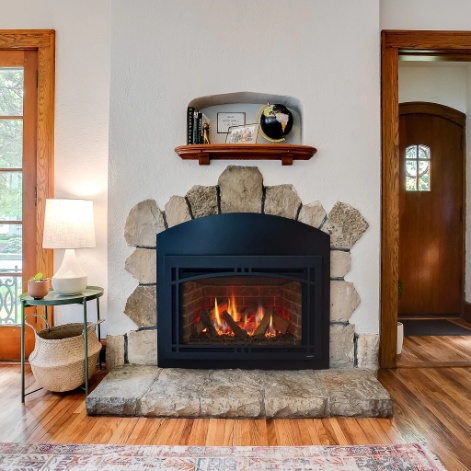Table of Contents
In 2019, roughly half of home buyers rated either wood or gas fireplaces as desirable or essential in the United States. A fireplace adds life and atmosphere to a home and creates a feeling of coziness.
In addition to the ambiance, a fireplace can help keep your home warm in the cold of fall and winter. If you’re wondering exactly how warm a fireplace keeps a home, you want to know its BTU rating.
In this article, we’ve covered everything you need to know about BTU ratings when it comes to fireplaces. Read on to find out the best BTU rating for your fireplace!
What Is a BTU Rating?
Before we look at how many BTUs you need for your home, what are BTU ratings?
BTU stands for British Thermal Unit. This unit is a measurement of how much space an appliance can heat or cool.
BTU is most commonly used for heaters and air conditioners, but it’s also an important measurement when it comes to fireplaces. For a fireplace, the BTU indicates not only the amount of space it can heat but how much energy it produces.
In short, the more heat an appliance generates, the higher its BTU rating will be, and they vary quite a bit. The average gas range BTU rating, for example, can be anywhere from 500 to 18,000.
Detailed Explanation of BTUs
Understanding BTUs
The British Thermal Unit (BTU) is a traditional unit of heat; it’s part of the British Imperial unit system.
It’s widely used in the United States and to some extent in the UK (despite the UK having officially adopted the metric system).
A BTU represents the amount of thermal energy required to raise the temperature of one pound of water by one degree Fahrenheit at sea level.
Calculation of BTUs
The formula for calculating a single BTU is straightforward: 1 BTU equals the energy needed to increase the temperature of 1 pound of water by 1°F.
However, when it comes to fireplaces and heating appliances, the BTU rating usually indicates the amount of heat produced by the unit in one hour.
For example, a fireplace with a rating of 10,000 BTUs can produce 10,000 BTUs of heat each hour.
Significance in Fireplaces
In the context of fireplaces, the BTU rating is a key indicator of the unit’s heating capacity.
A higher BTU rating means more heat output, making the fireplace more capable of warming a larger space.
However, it’s not just about the maximum output; efficiency plays a crucial role.
For instance, a wood-burning fireplace might have a high BTU output but lose a significant portion of that heat through the chimney, making it less efficient than a gas fireplace with a lower BTU rating but better heat retention.
Measuring Energy Efficiency
The BTU rating is also instrumental in measuring the energy efficiency of a fireplace.
This efficiency is not just about the amount of heat produced, but also how effectively that heat is used to warm a space.
For example, an electric fireplace might have a 100% efficiency rating since all the electrical energy used is converted into heat, but if the BTU output is low, it might not be sufficient to heat a large room.
Practical Implications
When choosing a fireplace, it’s essential to consider both the BTU rating and the size of the space you need to heat.
A common guideline is approximately 40 BTUs per square foot of space.
However, this can vary based on factors like ceiling height, insulation, and local climate.
It’s also important to balance the BTU output with energy costs and efficiency, as a very high BTU rating could lead to excessive energy consumption and higher bills.
Why It Matters
Understanding the BTU rating of a fireplace is crucial for selecting the right model for your needs.
It helps in estimating the heat output, understanding the efficiency, and calculating the operational cost.
By considering the BTU rating in conjunction with other factors like room size and insulation, you can choose a fireplace that provides cozy warmth efficiently and economically.
Determining How Many BTUs You Need
While there are many considerations when calculating your fireplace BTUs, there is a simple rule of thumb. As a general rule, it requires around 40 BTUs per square foot to heat a space.
For example, for an appliance with 40,000 BTUs, divide 40,000 by 40, and you get 1,000. So a fireplace with 40,000 BTU can heat roughly 1,000 square feet.
For a more exact estimate for your home, you can use our free online BTU rating calculator below to determine how many BTUs you need.
Free Online BTU Calculator
How to Use the BTU Calculator
This tool is designed to help you estimate the amount of energy required to heat or cool your room or house. Follow these simple steps to use the calculator:
Enter Room Dimensions:
Room Width (feet): Enter the width of the room in feet.
Room Length (feet): Enter the length of the room in feet.
Ceiling Height (feet): Input the height of the ceiling in feet.
Select Insulation Condition:
Choose the insulation condition of the room from the options: Good, Average, or Poor.
This helps in estimating the energy efficiency of the space.
Desired Temperature Change:
(°F): Specify the desired temperature change in degrees Fahrenheit. This is the difference in temperature that you wish to achieve compared to the current temperature.
Calculate:
Press the ‘Calculate’ button to get the estimated BTU value.
The calculator will display the estimated BTUs required for your room. This value indicates the amount of energy needed to heat or cool your space to the desired temperature.
Example “Desired Temperature Change” for BTU Calculator: If the temperature outside is 20°F, and you like the inside temperature to be 70°F, you have a “Desired Temperature Change” of 50°F.
Note: The default values are set for a room with dimensions 12 feet by 12 feet with a ceiling height of 12 feet, average insulation, and a desired temperature change of 30°F. You can change these values to match your specific requirements.
Factors That Affect Fireplace BTUs
On top of square footage, your ideal fireplace BTU rating depends on several other factors. Where you live, as well as the dimensions and style of your home, can mean higher or lower BTU requirements.
Home Size and Shape
The way your home is laid out is one of the biggest parts of deciding how many BTUs you need.
A larger home will generally require a higher BTU rating. However, in addition to size, ceiling height plays a big role because of the way hot air moves.
Hot air has a natural tendency to rise above cooler air. As a result, a room with a high ceiling will require a higher BTU than a room with the same square footage but a lower ceiling.
The size and shape of your home will also help you determine where the best location is to install a fireplace. If you plan to use it to heat several rooms, you should place it toward the center of your home.
Insulation
Your home’s insulation depends on the material it’s made of, as well as windows and doors.
A home with more insulation in the outer walls will trap heat more effectively and thus require fewer BTUs. On the other hand, a home with thinner walls will more easily transfer heat to the outside air.
Another place heat can escape is through poorly insulated windows and doors. Hire a professional to inspect your home to get the best idea of how well insulated it is.
Climate
If the air outside is warm, it takes fewer BTUs to heat a space. By the same token, you need more BTUs if you live in an especially cold location.
Some areas can vary greatly in temperature depending on the season. Keep in mind how many months out of the year your home will need to be heated.
Types of Fireplaces
There are three main types of fireplaces: gas, wood, and electric. Each of them has its pros and cons and varies in BTU and energy efficiency.
Gas
Natural gas is one of the most widely used fuel sources to heat homes. In addition to fireplaces, modern furnaces and stoves often run on natural gas.
There are many benefits to a gas fireplace in comparison to burning wood. They burn cleaner with no odor or soot and are much easier to light.
However, the installation can be pricier than other kinds of fireplaces, especially if your home doesn’t already have a gas line. Gas fireplaces are probably the most energy-efficient way to heat a home out of the three types.
Wood
Wood fireplaces have been used for hundreds of years around the world. The operation cost is relatively low in most areas where firewood is easy to obtain.
Many homeowners prize the authenticity of a real wood fire. The aroma and crackling sounds of logs are a great way to create a relaxed and welcoming mood.
As soot builds up, however, you have to clean the chimney regularly to avoid safety hazards. Wood fireplaces also lose a fair amount of heat up the chimney, so calculating an exact BTU is difficult.
Electric
An electric fireplace is by far the easiest to install and use. There’s no need for costly structural additions, and as long as you have power, you have access to a heat source.
Because they’re so accessible, electric fireplaces are great if you don’t need the heat very often. For an area where it’s only cold enough for a fire a few months out of the year, an electric fireplace can be a nice seasonal option.
While they can heat large areas quickly, electric fireplaces use a lot of energy, so consider how much you’re willing to add to your electric bill. This is a good choice to add to a heating system, but not as a primary source of heat.
Get the Fireplace You Always Dreamed Of
When choosing the right fireplace for your home, many things affect how many BTUs you need. Consider the climate, as well as your home’s layout and insulation.
No matter what BTU rating you need in your fireplace, we have the perfect option for your home. Dreifuss Fireplaces has been helping customers heat their homes since 1876.
Contact us today to learn more about the perfect BTU rating for your home!
Latest Articles

What Is An NG (Natural Gas) Indicator And Why You Need It For Your Fireplace
Table of Contents1 Understanding Natural Gas Fireplaces2 What is an NG Indicator?3 Importance of NG Indicators for Safety4 Types of NG Indicators5 Installation and Maintenance of NG Indicators6 Signs of a Faulty NG Indicator7 Frequently Asked Questions Natural gas fireplaces are a favored option among numerous homeowners due to their convenience and effectiveness. But, what is an NG (Natural Gas) indicator and why you need it for your fireplace? It is imperative to comprehend how they function and the significance of having an NG (Natural Gas) indicator for safety purposes. This article delves into the definition and significance of NG indicators. We will discuss the potential hazards associated with the absence of one and the various types of indicators accessible. Also, we will discuss installation and maintenance recommendations, and methods to recognize and rectify issues with malfunctioning indicators. Stay well-informed and ensure the safety of your home by referring to this exhaustive guide. Understanding Natural Gas Fireplaces Natural gas fireplaces serve as an efficient and convenient heating option for numerous households. They utilize natural gas as a fuel source to deliver consistent warmth and ambiance. How They Work and Why They Need NG Indicators The operation of natural gas fireplaces involves igniting natural gas to generate heat. This process requires diligent monitoring to ensure both safety and efficiency, a task facilitated by the use of NG indicators. NG indicators play a critical role in detecting potential gas leaks. They enable residents to promptly address and mitigate any associated hazards. Through continuous monitoring of gas levels and providing timely warnings and alerts, NG indicators uphold a secure indoor environment. It is imperative to ensure that these indicators function properly to facilitate the effective operation of natural gas fireplaces. This helps mitigate the inherent risks linked to gas leaks. What is an NG Indicator? An NG indicator is a specialized device equipped with advanced sensors and technology. It is specifically designed to detect natural gas leaks and monitor gas pressure in appliances, such as fireplaces. Definition and Purpose The NG indicator functions as a detector that monitors gas appliances for potential leaks. It provides essential functionality to ensure safety in households utilizing natural gas. These detectors play a crucial role in protecting residences by notifying occupants of dangerous gas leaks long before they escalate into perilous situations. Through continuous monitoring of gas levels in the vicinity, NG indicators offer an additional layer of protection. This is particularly important in properties that rely on gas-operated fireplaces or stoves. These devices not only help avert potential disasters but also enhance the overall peace of mind of homeowners. They assure them that their living spaces are equipped with reliable safety features. Importance of NG Indicators for Safety Natural gas indicators are essential for maintaining safety in households equipped with natural gas appliances. These devices serve as a proactive measure to promptly detect gas leaks. This offers homeowners a sense of security and assurance. Potential Dangers of Not Having an NG Indicator The absence of an NG indicator in residences equipped with natural gas appliances can pose significant hazards. This includes the risk of undetected gas leaks , carbon monoxide poisoning , and pilot outages that may lead to dangerous situations. These potential risks can profoundly impact indoor air quality. They directly influence the health and safety of individuals residing in the household. Undetected gas leaks can go unnoticed, gradually permeating the air and creating a potentially explosive environment. Insufficient ventilation from undetected exposure to carbon monoxide can lead to serious health complications. These range from mild symptoms such as dizziness to fatal poisoning. Without proper monitoring from an NG indicator, families are left susceptible to these concealed threats. This underscores the critical importance of implementing proactive measures to mitigate such risks. Types of NG Indicators Indicators for Natural Gas (NG) are available in diverse types. Each presents distinct detection capabilities tailored to specific requirements, encompassing both manual and automated alternatives. Manual vs. Automatic Indicators Manual NG indicators require user intervention for monitoring gas levels and identifying leaks. On the other hand, automatic indicators employ sophisticated technology to deliver continuous, real-time monitoring. This heightened efficiency and oversight enhance safety protocols. Conventional manual indicators rely on individuals to physically inspect and evaluate gas levels periodically. This renders them more susceptible to human errors. Conversely, automatic indicators feature sensors capable of promptly detecting even the most minute fluctuations in gas levels. This establishes a more dependable and precise monitoring mechanism. Automatic indicators can activate alerts and shut-off systems upon detecting a leak. This ensures immediate action to avert potential hazards. This advanced technology enhances safety protocols and instills a sense of command and assurance among users. Installation and Maintenance of NG Indicators The reliable and accurate performance of NG indicators necessitates proper installation and consistent maintenance. This often entails professional installation and adherence to recommended service guidelines. Proper Installation and Regular Maintenance Tips The proper installation of NG indicators involves adhering to the specifications in the user manual. Maintenance protocols entail strict adherence to a predetermined maintenance schedule to ensure sustained operational efficiency. During the installation phase, it is imperative to verify that the NG indicators are securely affixed in the designated location as stipulated by the manufacturer. Crucial steps include confirming power source compatibility and ensuring proper grounding of the device to optimize performance. Calibration of the indicator must be executed meticulously to ensure precise readings. Regarding maintenance, essential practices include regular inspection for signs of wear, thorough cleaning of the indicator components, and routine functionality tests. By allocating time to a consistent maintenance regimen, the NG indicator can operate with optimal efficiency over an extended duration. Signs of a Faulty NG Indicator Recognizing indicators of a malfunctioning NG indicator is essential for upholding safety and performance standards. Inaccuracies and detection issues can undermine the efficacy of these devices. Identifying and Addressing Issues The process of identifying and addressing issues related to NG (natural gas) indicators requires a systematic troubleshooting approach. This ensures their optimal performance

What You Need To Know About Gas Log Set Safety And Installation Considerations
Table of Contents1 Understanding Gas Log Sets2 Safety Considerations for Gas Log Sets3 Installation Guidelines for Gas Log Sets4 Maintaining and Troubleshooting Gas Log Sets5 Frequently Asked Questions Gas log sets are a favored option among homeowners seeking to enjoy the comfort and atmosphere of a conventional fireplace without the inconvenience of wood. This article tells you what you need to know about gas log set safety and installation considerations. Before incorporating one into your residence, it is imperative to understand the safety considerations associated with their use. This discussion delves into the potential hazards linked with gas log sets. It presents crucial precautions to uphold the safety of your home. Also, it outlines proper installation procedures and offers insight into common errors to avoid. Finally, it provides advice on maintenance and troubleshooting. Gain comprehensive knowledge on gas log set safety and installation considerations. Understanding Gas Log Sets Comprehending gas log sets is essential for individuals seeking to elevate their fireplace experience, and for gas lag set safety and installation. These heating appliances can operate on either natural gas or propane. In addition, they are available in a range of styles, including vented, ventless, and vent-free options. They provide an array of benefits and customization opportunities through various fireplace accessories. What are Gas Log Sets? Gas log sets are meticulously crafted artificial logs. They are designed to imitate the appearance and functionality of authentic wood logs within fireplaces. These gas log sets typically consist of ceramic or refractory concrete logs that have been skillfully molded and painted. This allows them to replicate the natural grain and texture of real wood. The logs are arranged in various configurations within the fireplace. They establish a realistic and welcoming ambiance. In addition to the logs, gas log sets often include fireplace accessories such as glowing embers. Accessories also include decorative stones, and even pine cones to enhance the overall aesthetic appeal. Homeowners can select from an array of placement options. These include traditional wood stack, cascading driftwood, or a contemporary geometric arrangement. Homeowners can align their preferred style and design preferences. Safety Considerations for Gas Log Sets Safety considerations for gas log sets are of utmost importance to guarantee a secure and pleasant fireplace experience. It is essential to address potential hazards such as carbon monoxide exposure, gas leaks, and fire safety to maintain a safe environment for homeowners. Potential Hazards and Precautions Gas log sets come with potential hazards that must be taken seriously, including the risks of gas leaks, carbon monoxide poisoning, and fire incidents. It is imperative to establish and adhere to rigorous safety measures to ensure the well-being of individuals and properties involved in the use of gas log sets. Gas leaks represent a significant hazard when utilizing gas log sets. They can result in the accumulation of combustible gas within the premises, heightening the possibility of explosions or fires. Carbon monoxide, an insidious gas generated during incomplete combustion, poses a grave threat due to its colorless and odorless nature, making it undetectable without proper monitoring. To address these risks effectively, it is vital to install carbon monoxide detectors and gas leak sensors in the vicinity of the gas logs. Routine maintenance checks on the gas log system, including cleaning and inspection procedures, are critical to ensure safe operations and the prompt identification of potential issues. In case of a gas leak or suspected presence of carbon monoxide, immediate evacuation of the affected area is paramount, followed by prompt contact with emergency services. Recognizing the distinct odor of rotten eggs associated with natural gas can serve as an early warning sign, prompting swift actions to avert any potential accidents. Installation Guidelines for Gas Log Sets The installation of a gas log set necessitates meticulous planning and strict adherence to specific guidelines. This includes verifying a secure gas connection, ensuring proper gas lines are in place, and complying with local building codes. Often, the complexity of these requirements may require the expertise of a certified technician. Proper Installation Techniques The appropriate installation procedures for gas log sets involve the secure connection of gas lines, meticulous adherence to installation manuals, and strict compliance with local building codes. It is imperative to prioritize the guarantee of secure gas connections to avert leaks and potential safety hazards. During the installation of gas log sets, utilizing suitable sealants and fittings is essential to establish a tightly sealed connection. The correct installation of gas lines is critical for both the safety and operational efficacy of the gas log set. Reference to the installation manual is highly advisable for detailed, step-by-step guidance to prevent inaccuracies and ensure the successful establishment of the gas log set. Consistently adhering to building codes and regulations upholds safety standards. Seeking guidance and confirmation from a certified technician before and after installation can offer invaluable support and assurance throughout the process. Common Installation Mistakes to Avoid It is imperative to avoid common installation errors to ensure the secure and effective operation of gas log sets. This includes verifying proper gas connections and compliance with building codes. Improper gas connections can result in leaks and potential hazards, underscoring the importance of verifying the tightness and correct alignment of all fittings. Failure to adhere to building codes can lead to structural complications, penalties for non-compliance, or even safety concerns. To prevent these oversights, it is advised to consult the manufacturer’s installation guidelines and strictly adhere to local regulations. Engaging a certified technician for the installation of gas log sets guarantees that the procedure is carried out accurately and securely. This provides assurance that the system is functioning as intended. Maintaining and Troubleshooting Gas Log Sets Regular maintenance and troubleshooting of gas log sets are imperative to uphold their optimal performance and safety. This includes thorough examination of the pilot light, pilot assembly, and other gas appliances to preserve heating efficiency and promptly resolve any arising issues. Tips for Maintenance and Repair Ensuring the proper maintenance of your gas log set necessitates conducting

Key Considerations For Using Compressed Liquid Propane In Fireplace Installation
Table of Contents1 What is Compressed Liquid Propane?2 Benefits of Using Compressed Liquid Propane in Fireplaces3 Safety Precautions for Installing Compressed Liquid Propane Fireplaces4 Installation Process for Compressed Liquid Propane Fireplaces5 Maintenance and Care for Compressed Liquid Propane Fireplaces6 Alternative Fuel Options for Fireplaces7 Frequently Asked Questions If you are contemplating the use of compressed liquid propane in your fireplace installation, this discussion will delve into the advantages of adopting this alternative fuel option. These benefits include enhanced efficiency, cost savings, and important safety precautions to consider. Furthermore, a detailed step-by-step guide on the installation process will be provided, along with recommendations for maintenance and care. A comparison of various fuel options for fireplaces will also be conducted to assist you in making an informed decision. We encourage you to stay engaged to gain insights into optimizing your fireplace’s capabilities with compressed liquid propane. What is Compressed Liquid Propane? Compressed Liquid Propane is a versatile energy source contained in a high-pressure propane tank. It finds extensive utility in both residential and commercial settings, prominently including fireplaces. Recognized for its convenience and efficiency, Compressed Liquid Propane emerges as a favored option for heating residential spaces and facilitating culinary pursuits across various environments. Additionally, it serves as a viable fuel substitute in vehicular contexts, portable cooktops, and outdoor grilling scenarios due to its propensity for clean combustion. The attribute of portability, coupled with ease of storage, positions Compressed Liquid Propane as an optimal energy source for individuals residing off the conventional grid. It is also great for engaging in outdoor activities such as camping and recreational vehicle (RV) travel. Moreover, the high energy density inherent to Compressed Liquid Propane renders it a dependable choice for sustaining generators during instances of power disruptions. Benefits of Using Compressed Liquid Propane in Fireplaces Utilizing Compressed Liquid Propane for fireplace installation presents several benefits. These include enhanced fuel efficiency, convenience, cost-effectiveness, and a favorable environmental footprint. These attributes render it a recommended option for heating solutions, applicable to both on-grid and off-grid settings. Efficiency and Cost Savings The utilization of Compressed Liquid Propane in fireplaces offers significant advantages, notably in terms of high fuel efficiency and cost-effectiveness. These attributes are underscored by the exceptional BTU rating and overall heating efficiency of Compressed Liquid Propane. The elevated fuel efficiency exhibited by Compressed Liquid Propane fireplaces necessitates less fuel to generate the same level of heat compared to traditional wood-burning fireplaces or electric heating systems. Consequently, homeowners can realize cost savings on their heating expenditures over an extended period. Moreover, the clean-burning characteristics of propane minimize maintenance costs linked to soot and ash cleanup. This further enhances the cost-effectiveness of employing propane fireplaces. Safety Precautions for Installing Compressed Liquid Propane Fireplaces Ensuring safety is of utmost importance during the installation of Compressed Liquid Propane fireplaces. This requires strict adherence to safety regulations, meticulous attention to proper ventilation requirements, careful control of ignition sources, and the incorporation of carbon monoxide and gas leak detection systems. Important Safety Measures Essential safety protocols for the installation of Compressed Liquid Propane fireplaces encompass adherence to fire safety regulations. Engaging in professional assessments and employing sophisticated gas leak and carbon monoxide detection mechanisms is crucial. Professional evaluations play a critical role in identifying any prospective hazards or irregularities within the fireplace infrastructure. These assessments are vital in ensuring the operational integrity of all components and compliance with safety protocols. Routine inspections serve to forestall potential fire incidents, gas discharges, or carbon monoxide emissions that could pose significant threats to both the property and individuals in the vicinity. The utilization of advanced gas leak and carbon monoxide detection systems serves as an additional safeguard by promptly notifying occupants of any elevated levels of these hazardous gases. Installation Process for Compressed Liquid Propane Fireplaces The installation procedure for Compressed Liquid Propane fireplaces encompasses several critical steps. These include: Adhering to installation guidelines Correctly positioning the propane tank Ensuring precise gas line installation Optimizing heat output Monitoring pressure regulation Establishing the pilot light Step-by-Step Guide The installation process of Compressed Liquid Propane fireplaces involves a systematic approach. This begins with the construction of the firebox, followed by the installation of the gas control valve, setup of the ignition system, design of the flue, and verification of a suitable combustion air supply. The construction of the firebox assumes critical importance as it serves as the foundation of the fireplace structure. It securely holds the combustible materials in place. Subsequently, the gas control valve plays a key role in managing the propane flow, guaranteeing safe and efficient operation. The installation of the ignition system facilitates convenient and reliable fire initiation. Designing the flue is a necessary step to direct exhaust gases outside, thus preventing their accumulation indoors. Moreover, ensuring a proper combustion air supply is essential to sustain optimal burning conditions and enhance fuel consumption efficiency. Each component contributes significantly to the functionality and safety of the fireplace installation process. This underscores the importance of meticulous attention to detail and adherence to established protocols. Maintenance and Care for Compressed Liquid Propane Fireplaces Consistent maintenance and attention to Compressed Liquid Propane fireplaces are imperative to guarantee their optimal functionality. This includes adherence to prescribed maintenance protocols, regular chimney upkeep, prevention of soot accumulation, and scheduling of routine propane deliveries and professional inspections. Tips for Keeping Your Fireplace in Good Condition For the maintenance of your Compressed Liquid Propane fireplace, it is essential to conduct regular checks on ignition sources. Monitor flame appearance, clean the gas burner and pilot assembly, and verify the correct operation of the safety shut-off valve. The inspection of ignition sources requires a detailed examination of the electronic igniter. This helps identify any signs of damage or corrosion and ensures proper sparking upon activation. Monitoring flame appearance involves observing a consistent blue flame with minimal flickering, which signifies efficient combustion. Cleaning the gas burner and pilot assembly can be performed using a soft brush or compressed air to eliminate any dirt or debris that may



















































































